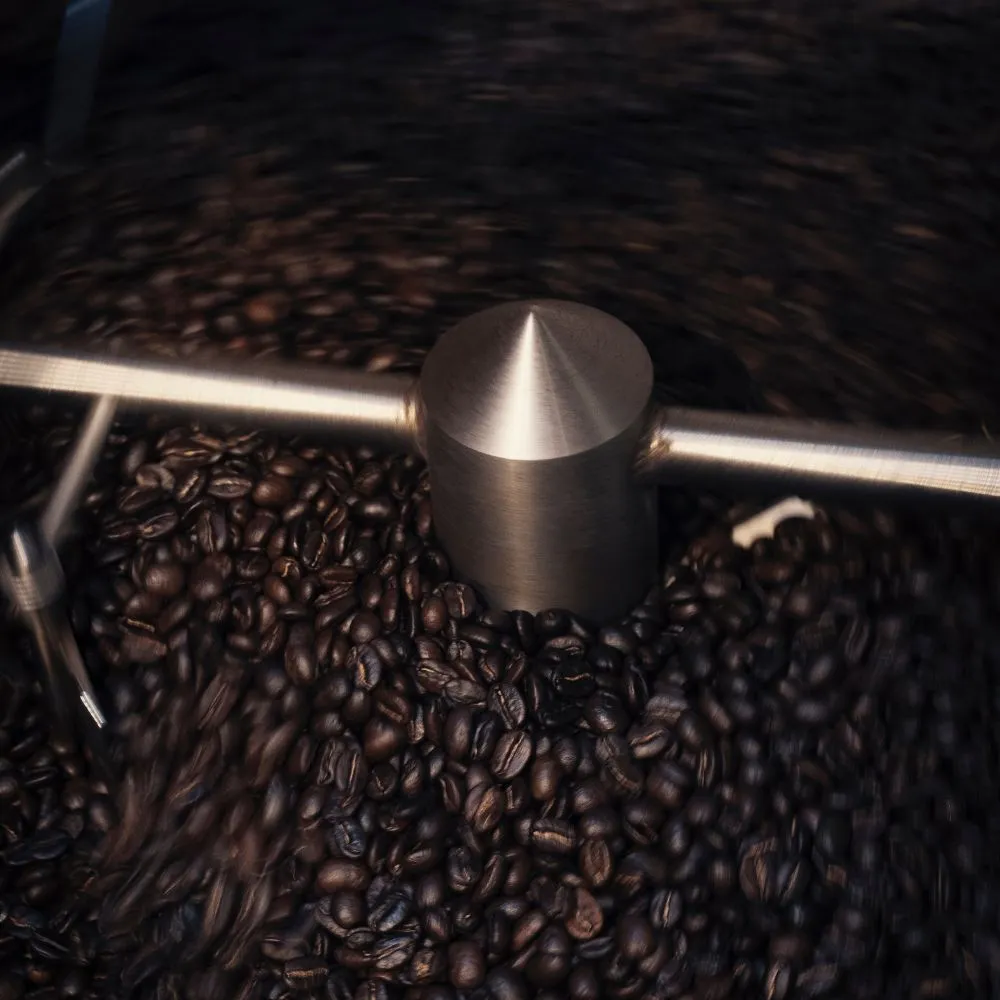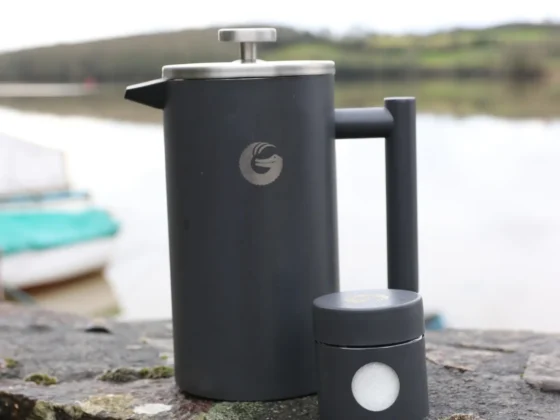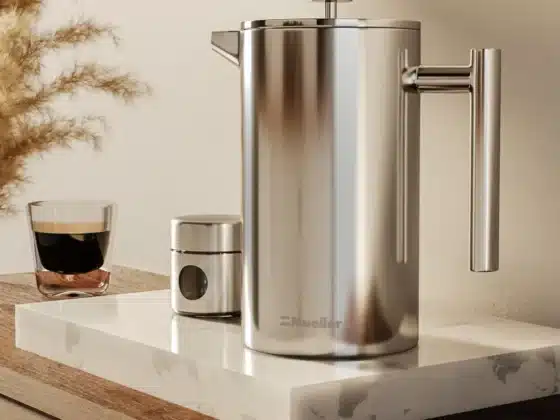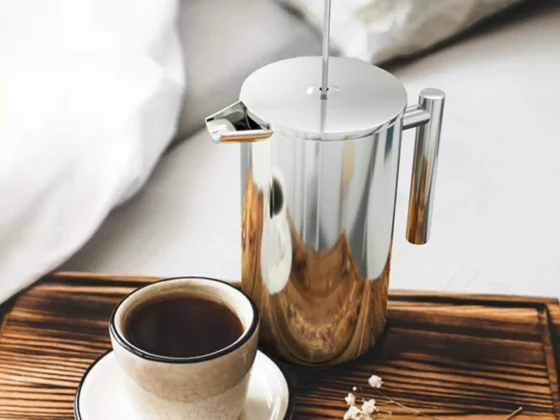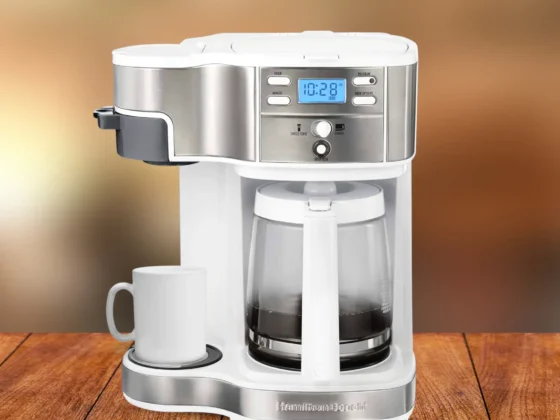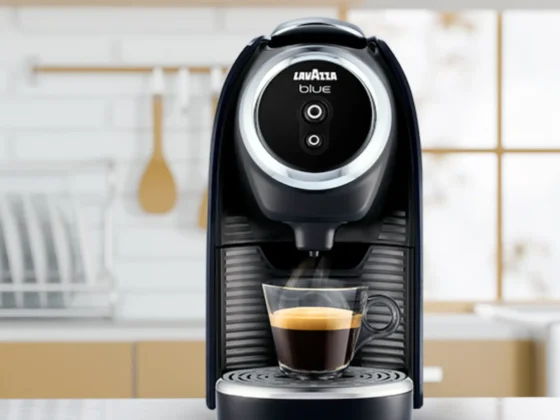As a coffee lover, you know that the brewing method can significantly impact the flavor, aroma, and overall experience of your daily cup of joe. With numerous techniques to choose from, finding the perfect method for your taste preferences can be a challenge. In this ultimate showdown, we’ll compare two of the most popular brewing methods – French press vs pour-over – to help you decide which one is right for you. We’ll delve into the basics of each method, explore their unique flavor profiles, and examine their pros and cons. By the end of this comprehensive guide, you’ll have a better understanding of these coffee brewers, empowering you to make an informed decision and ultimately elevate your coffee game. So, let’s dive into the rich and aromatic world of coffee brewing!
Pour Over vs French Press: Key Takeaway
- French press is an immersion brewing method that produces a rich, bold, and full-bodied coffee, while pour-over is a drip brewing method that creates a clean, bright, and well-defined coffee.
- Both brewing methods have their advantages and disadvantages, making it essential to consider your coffee preferences and lifestyle when choosing between the two.
- Flavor profiles, texture, and the presence of sediment in the cup are among the key differences between these two brewers.
- Mastering each brewing method requires specific tools and techniques, with the French press coffee maker being more beginner-friendly, and pour-over offering more control over brewing variables.
- Experimenting with both brewing methods can help you find the perfect balance and customize your coffee experience based on your personal preferences.
The Classic Immersion Technique: French Press Method
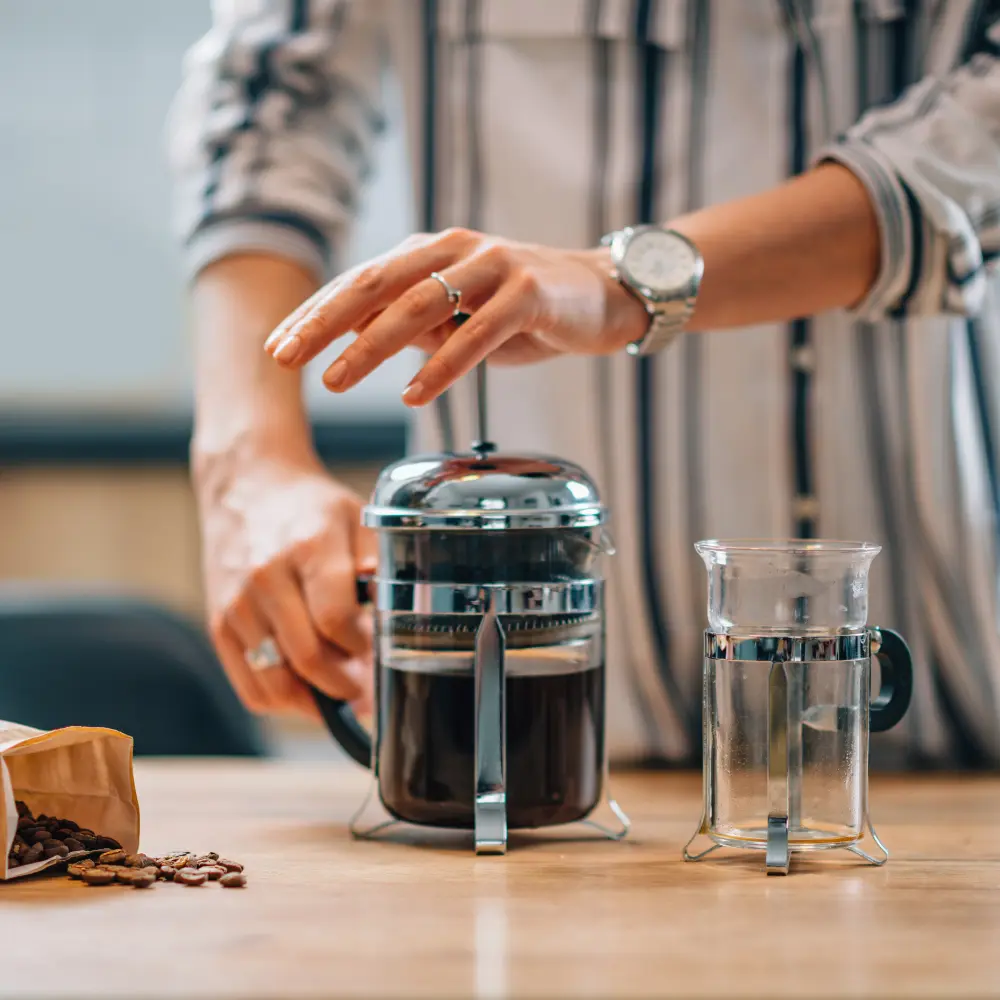
The French press, also known as a coffee press or plunger coffee, is a time-honored coffee brewing technique that has enjoyed widespread popularity since its inception in the late 1920s. (1) This method involves immersing coffee grounds in hot water for an extended period before pressing down on a plunger to separate the coffee grounds from the brewed coffee. The result is a full-bodied and robust cup of coffee with a rich mouthfeel and pronounced flavors. The French press is predicated on an immersion brewing technique, which entails submerging the coffee grounds in water throughout the entire brewing process, thus allowing a more uniform extraction of flavor compounds.
The Delicate and Controlled Process: Pour Over Method
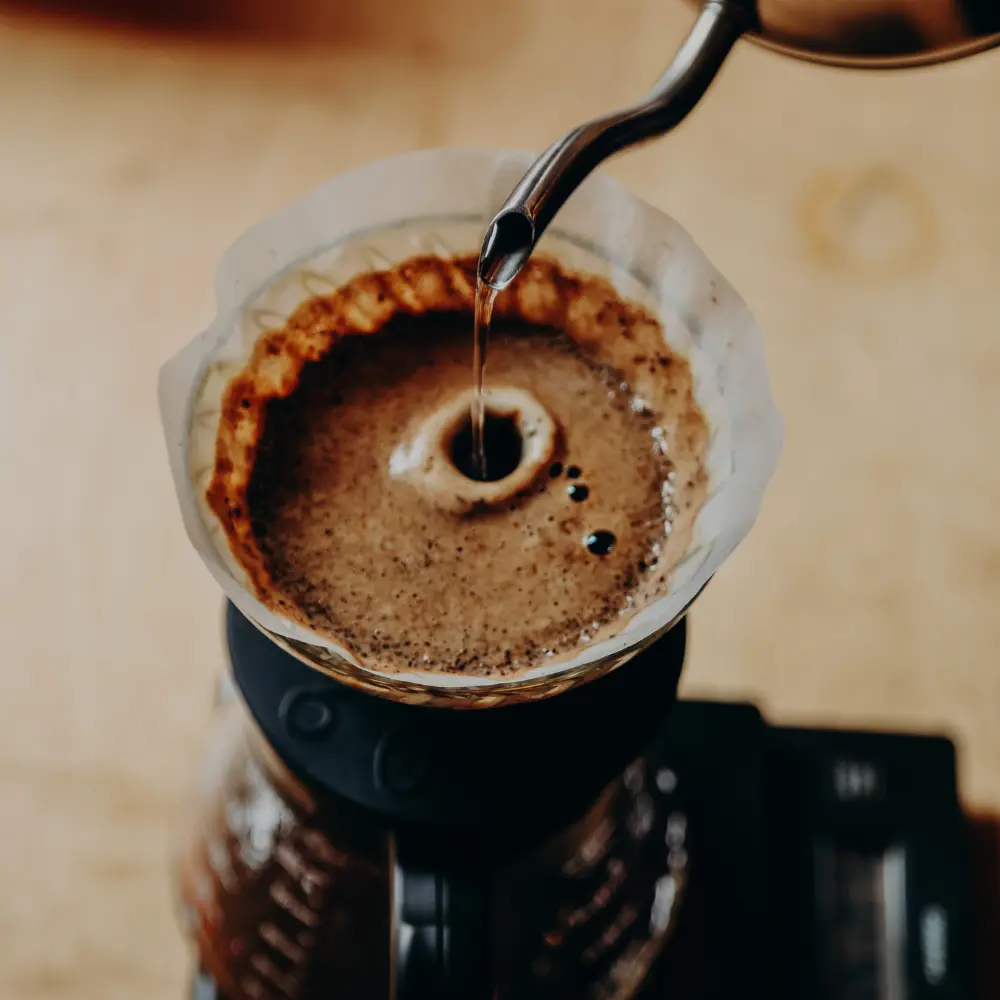
In contrast, pour-over brewing is a more subtle and controlled method that involves the gradual pouring of hot water over coffee grounds meticulously and steadily. The water flows through the coffee grounds and filter, extracting flavors as it makes its way through, before eventually dripping into a carafe or mug below. This process affords the coffee enthusiast precise control over crucial elements such as water temperature, brewing time, and coffee-to-water ratio, all of which can significantly impact the quality and flavor of the final brew. Pour-over coffee is renowned for its clean, bright, and well-defined flavors, featuring a lighter body when compared to its French press counterpart.
French Press vs Pour Over Coffee: The Flavor Profiles
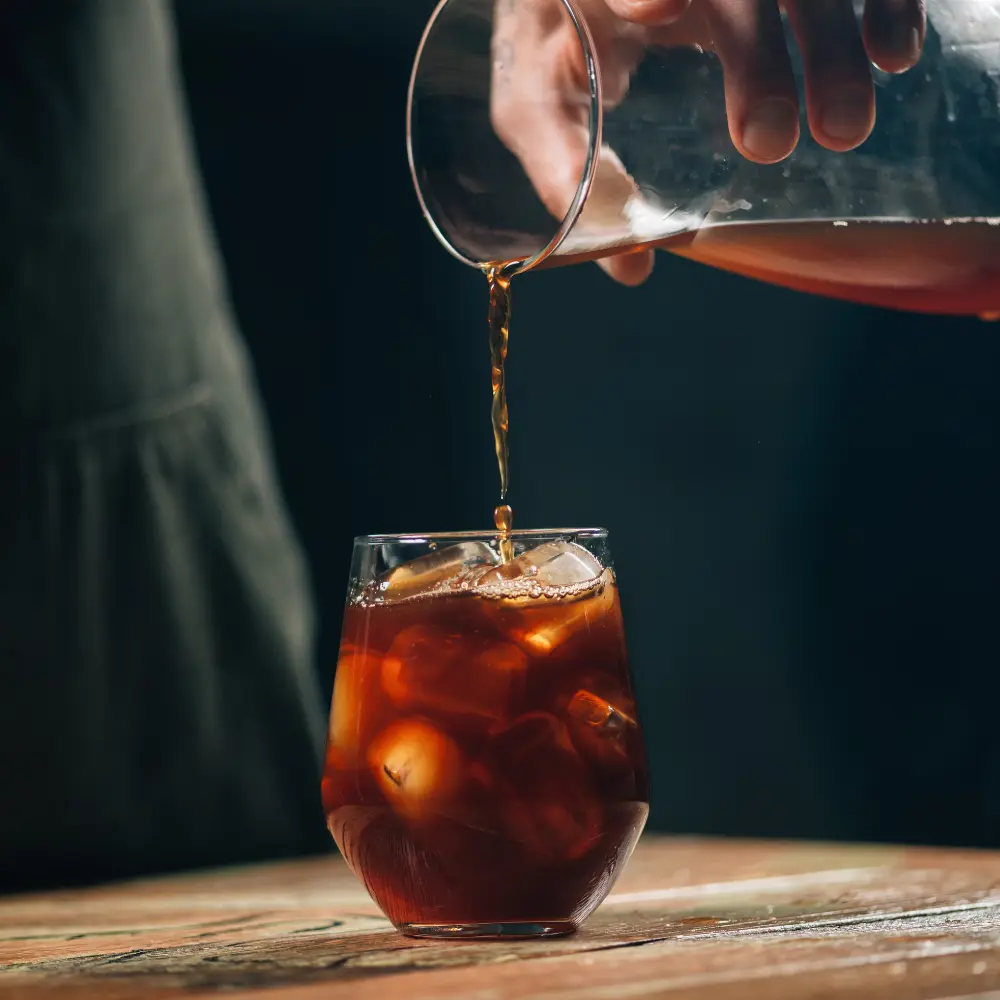
Coffee connoisseurs are often fervent advocates of particular flavor profiles in their favorite brews. These brewing methods, both revered in the coffee world, produce distinctive flavors and mouthfeels, captivating different cohorts of coffee drinkers. So, let’s delve into the idiosyncratic traits of each method to assist you in determining which one would best titillate your taste buds.
French Press: Rich, Bold, and Full-Bodied
French press coffee is synonymous with its lush, dauntless, and full-bodied flavor profile. This is principally due to the immersion brewing process, enabling a more homogenous and exhaustive extraction of the coffee’s flavor compounds. Furthermore, the metal mesh filter employed in the French press is conducive to an augmented quantity of oils and fine particles traversing into the final brew, enhancing the richness and stoutness of the flavor. Therefore, French press coffee typically has a weighty mouthfeel and more prominent flavors, rendering it a prevalent choice for those who prefer a more intense coffee experience.
Pour Over: Crisp, Radiant, and Well-Defined
On the other hand, pour-over coffee boasts a crisp, radiant, and well-defined flavor profile. The use of a paper or metal filter in the pour-over method absorbs natural oils and fine particles, resulting in a cleaner and silkier cup of coffee. Moreover, the controlled pouring technique allows for even extraction, facilitating the emergence of delicate and nuanced flavors in the coffee. Pour-over coffee generally exhibits a lighter body when compared to French press coffee, making it an impeccable option for those who appreciate the subtleties and intricacies of different coffee beans.
Factors Influencing Flavor Profiles in Both Methods
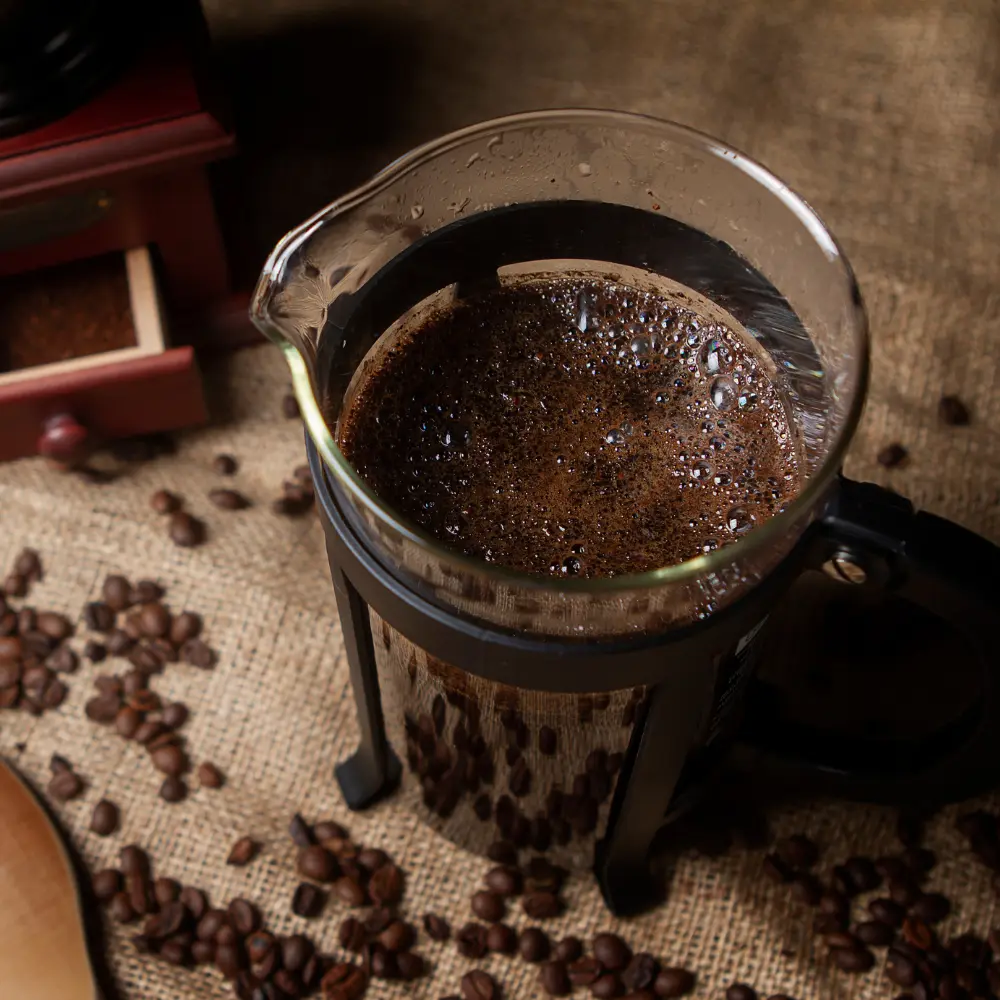
Several factors can impact the flavor profiles of French press and pour-over coffee, including:
- Coffee Beans: The type and quality of coffee beans wield a significant influence in deciding the ultimate flavor profile. Different beans possess unique flavor characteristics that may be more accentuated or emphasized in one brewing method over the other.
- Grind Size: The optimal grind size varies between these brewers. French press typically necessitates a coarser grind, while pour-over necessitates a medium to medium-fine grind for even extraction.
- Brewing Time: Immersion brewing in the French press involves a lengthier steeping time, typically around 4 minutes, which can yield a bold and more hearty flavor. Pour-over brewing requires a shorter brewing time, often between 2-3 minutes, generating a cleaner and more delicate flavor.
- Water Temperature: Both methods mandate meticulous water temperature control for optimal extraction. Water that is too hot or too cold can negatively affect the coffee’s flavor profile.
- Coffee-to-Water Ratio: The ideal coffee-to-water ratio differs between the two methods and can significantly impact the strength and flavor of the final brew. Experimenting with various ratios can assist in discovering the ideal balance for your taste preferences.
French Press vs Pour Over Brewing: Pros and Cons
Each brewing method boasts its own set of advantages and disadvantages, rendering them more appropriate for particular kinds of coffee aficionados. By comprehending the pros and cons of these brewing techniques, you can make a discerning decision founded on your personal preferences and priorities.
Advantages of the French Press Method
- Easy to use: The coffee press is a simple and uncomplicated brewing method that necessitates minimal equipment and technique.
- Lush, full-bodied flavor: The immersion brewing and metal mesh filter contribute to a bold and vigorous flavor profile, rendering it an impeccable option for those who prefer a more robust coffee experience.
- No need for paper filters: The coffee press employs a reusable metal mesh filter, reducing waste and eliminating the necessity for disposable paper filters.
- Easily scalable: They come in diverse sizes, making it effortless to brew a single cup or several servings at once.
- Versatility: You may change the strength of your coffee by modifying the amount of coffee grounds you use and the period you steep it. This means that depending on your preferences, you can get a robust, bold coffee or a more gentle and subtle brew.
Disadvantages of the French Press Method
- More sediment: The metal mesh filter allows more fine particles to pass through, leading to a slightly gritty texture in the final cup.
- Less control over extraction: The immersion brewing technique offers less precise control over the extraction process compared to pour-over methods.
- Cleanup: The cleaning process can be more time-consuming, requiring the disassembly and thorough cleaning of the filter and plunger.
Advantages of the Pour Over Method
- Clean, well-defined flavor: The method yields a cleaner, brighter cup with more nuanced flavors, appealing to those who relish the subtleties of diverse coffee beans.
- Greater control over extraction: The pour-over method offers more precise control over the extraction process, allowing you to fine-tune your brewing technique for the perfect cup.
- Minimal equipment: Pour-over brewing requires minimal equipment, making it a compact and portable option.
- Eco-friendly: Using compostable or reusable paper filters can be more environmentally friendly.
- Aesthetic appeal: It can be an elegant and visually captivating process, adding a touch of sophistication to your coffee routine.
Disadvantages of the Pour Over Method
- Steeper learning curve: Pour-over brewing requires more skill and technique than the French press, making it potentially more challenging for beginners.
- More dependence on accessories: The brewing often necessitates additional equipment, such as a gooseneck kettle, for optimal results.
- Less convenient for multiple servings: Pour-over brewing is generally better suited for single servings, as brewing multiple cups can be more time-consuming and cumbersome.
Mastering the Art of French Press vs Pour Over Brewing
To attain the perfect cup of coffee using either a French press or pour-over brewing, it’s imperative to comprehend the indispensable tools and techniques for each method. By mastering these skills, you can enhance your coffee experience and relish a consistently scrumptious cup every time.
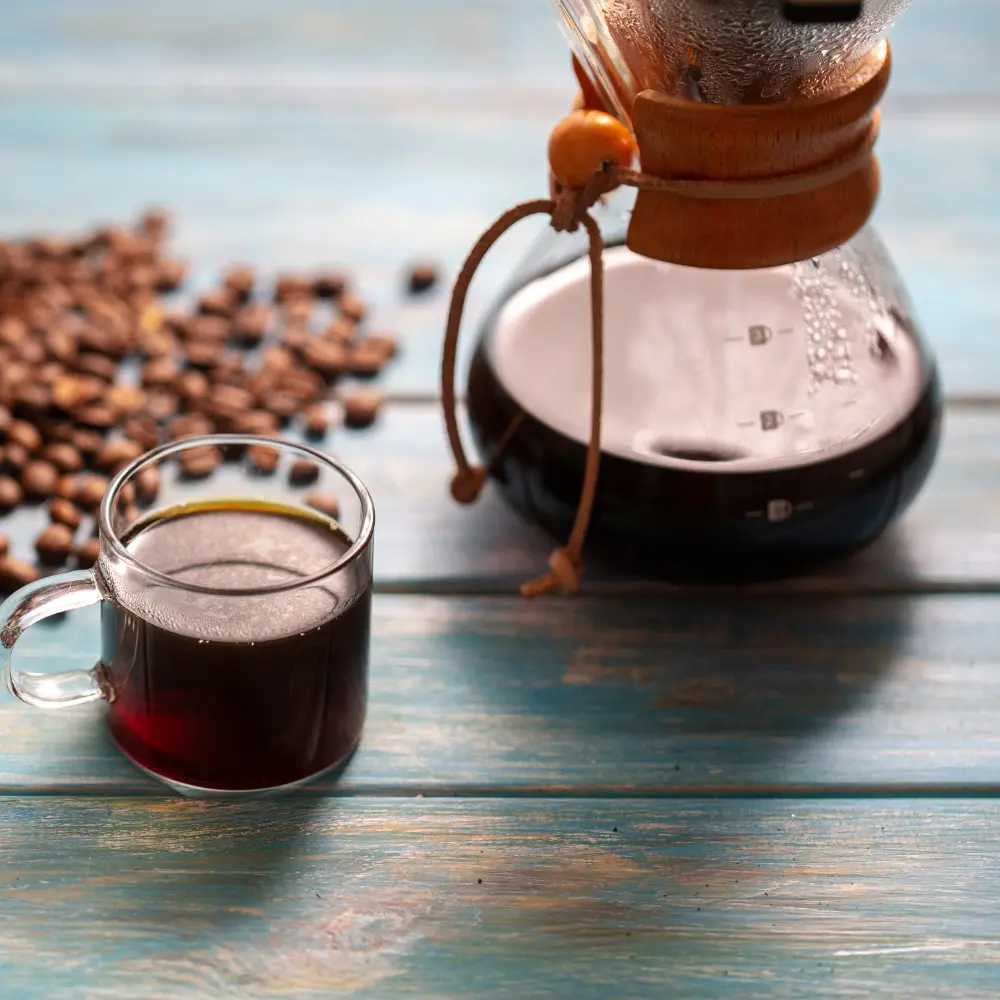
Essential Tools for French Press Brewing
- A high-quality French press: Choose a coffee press crafted from sturdy materials such as borosilicate glass or stainless steel to ensure durability and ideal heat retention.
- Freshly roasted coffee beans: Invest in high-quality, freshly roasted coffee beans to maximize flavor and aroma.
- Coffee grinder: A burr grinder is optimal for achieving a consistent, coarse grind, which is vital for French press brewing.
- Kitchen scale: A digital scale will aid in precisely measuring your coffee and water ratios for a balanced extraction.
- Water kettle: A dependable kettle with temperature control is essential for heating water to the optimum temperature.
Essential Tools for Pour Over Brewing
- Pour over brewer: Choose a pour over brewer that suits your preferences, such as a Chemex, Hario V60, or Kalita Wave.
- Freshly roasted coffee beans: As with French press brewing, high-quality, freshly roasted coffee beans are essential for maximizing flavor.
- Coffee grinder: A burr grinder is recommended for achieving a consistent, medium-fine grind suitable for pour over brewing.
- Kitchen scale: A digital scale ensures accurate measurements of coffee and water for a balanced extraction.
- Gooseneck kettle: A gooseneck kettle provides precision and control during the pouring process, allowing for even saturation of the coffee grounds.
- Paper or reusable filters: Select the appropriate filter for your pour over brewer to ensure a clean and sediment-free cup.
Tips and Tricks for Brewing Perfection with Each Method
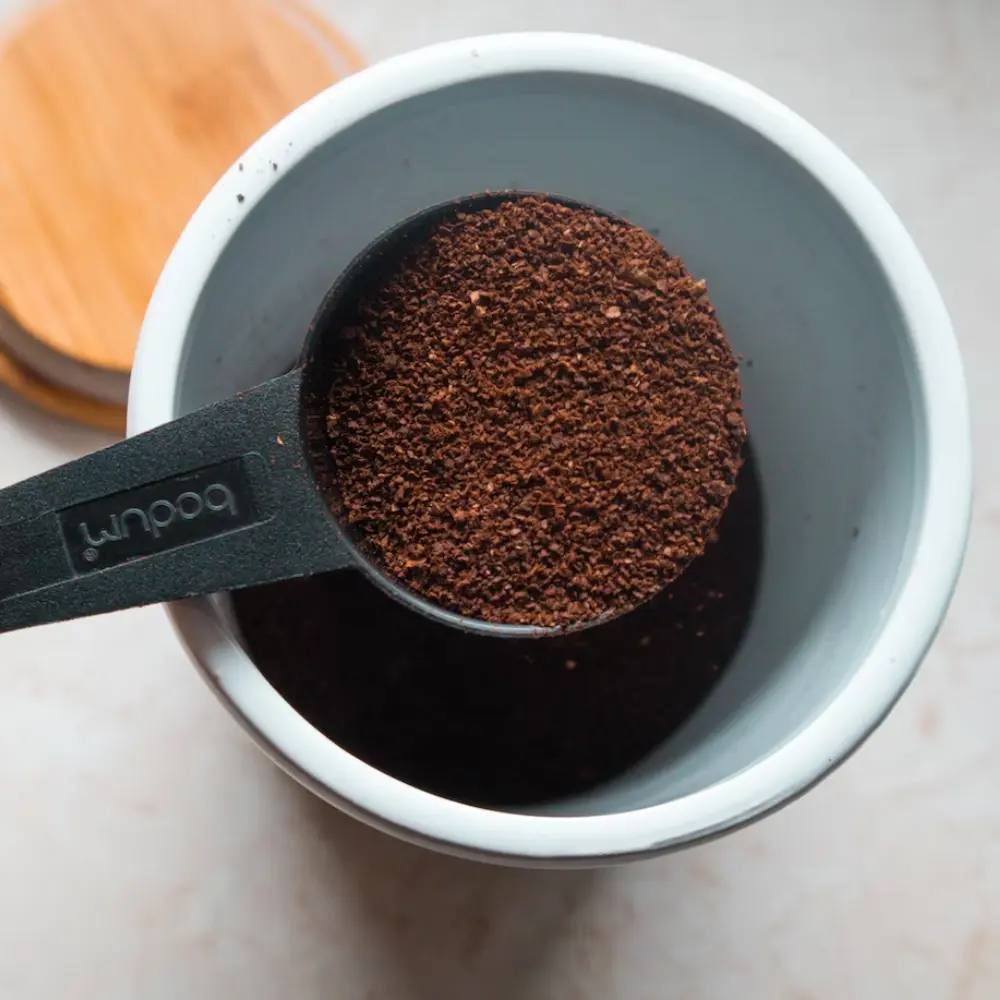
French Press:
- Preheat your press to maintain optimal brewing temperature.
- Use a coffee-to-water ratio of 30 g (1.1 oz) of coffee grounds to 500 ml (17 US fl oz) of water.
- Allow the coffee to steep for 4 minutes before plunging for optimal extraction.
- Pour the brewed coffee into a separate carafe or cup immediately after plunging to prevent over-extraction and bitterness.
Pour Over:
- Pre-wet your paper filter to eliminate any potential papery taste and preheat your brewing device.
- Use a coffee-to-water ratio of 1 ounce of beans for every 16 ounces of water.
- Perform a 30-second “bloom” by pouring a small amount of water (approximately twice the weight of the coffee) to allow the coffee grounds to degas.
- Pour the remaining water in a slow, circular motion, ensuring even saturation of the coffee grounds and maintaining a consistent water level in the brewer.
- Experiment with grind size, water temperature, and pouring technique to fine-tune your pour over brewing process.
Choosing the Right Brewing Method for Your Coffee Preferences
Selecting the ideal brewing method is a personal choice, influenced by factors such as taste preferences, brewing time, and desired level of control. By understanding the nuances of both of these brewers, you can determine which method aligns best with your preferences and enjoy a truly customized coffee experience.

Factors to Consider When Choosing a Brewing Method
- Taste preferences: If you prefer a rich, full-bodied cup with bold flavors, the coffee press may be your ideal choice. On the other hand, if you enjoy a cleaner, brighter cup with more defined flavors, the pour over method may be more suitable.
- Brewing time: French press brewing typically takes around 4 minutes, whereas pour over brewing can take 2-3 minutes depending on the brewer and technique. Consider the time you’re willing to dedicate to your coffee-making routine.
- Level of control: Pour over brewing offers more control over the extraction process, allowing you to fine-tune your technique and adjust variables such as grind size, water temperature, and pouring technique. French press brewing is more straightforward, with fewer variables to manage.
- Cleanup and maintenance: French press brewing requires additional cleanup as it necessitates cleaning the filter and plunger. Pour over brewing, on the other hand, is less time-consuming and easier to clean.
Best Coffee Beans for Each Method
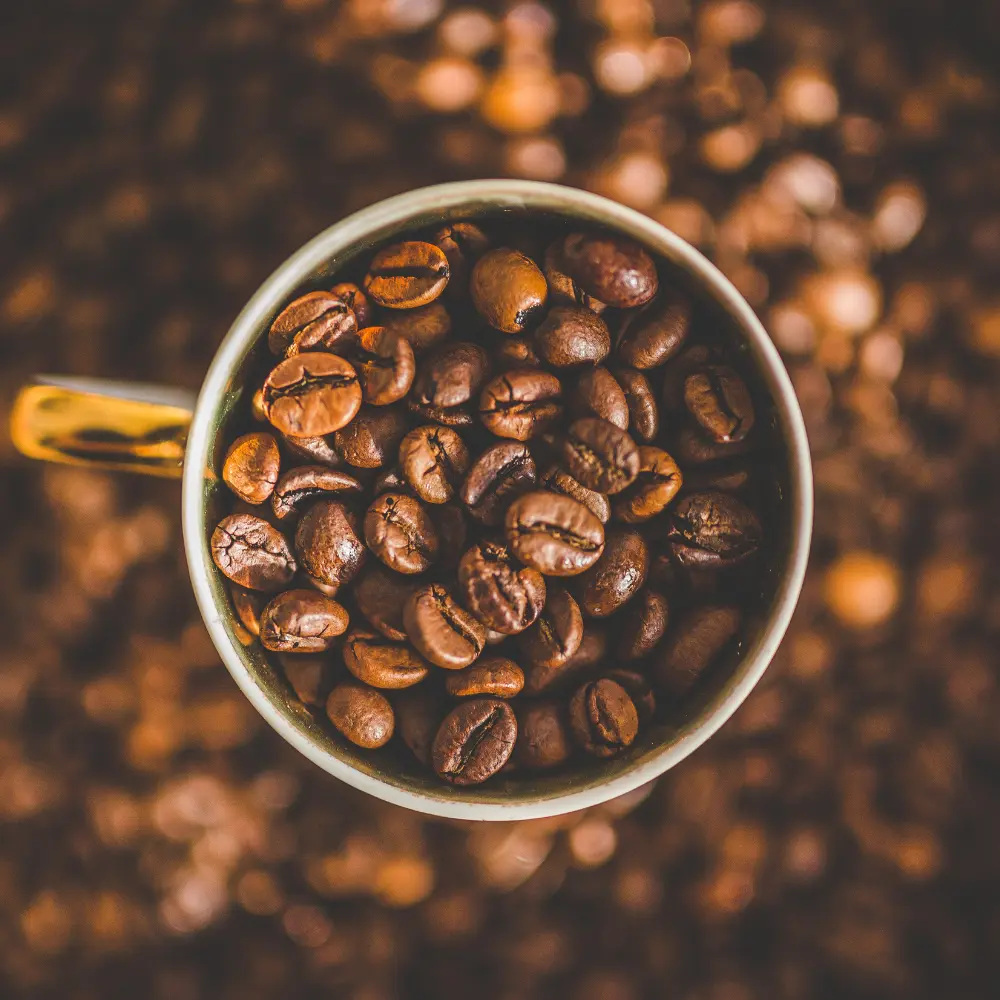
French Press:
- Coffee Beans: Opt for medium to dark roast beans that complement the full-bodied nature of French press brewing.
Pour Over:
- Coffee Beans: Light to medium roast beans are well-suited for pour over brewing, as they highlight the bright and nuanced flavors characteristic of this method.
Experimenting with Both Techniques for a Personalized Coffee Experience
Embrace the opportunity to explore both French press and pour over brewing techniques, as each method offers unique benefits and flavor profiles. By experimenting with different coffee beans, grind sizes, and brewing variables, you can develop a personalized coffee experience tailored to your taste preferences. Additionally, alternating between the two methods can help you better appreciate the diverse flavors and characteristics that each brewing technique brings to your cup.
French Press vs Pour Over: Conclusion
The ultimate and definitive contest between the French Press and Pour Over coffee brewing methods boils down to personal inclinations and priorities. It is indisputable that while the French Press technique bestows a rich, bold, and full-bodied coffee with minimal maintenance, the Pour Over brewing method presents a clean, bright, and well-defined cup of coffee that showcases the intricacies of diverse coffee beans. Both methodologies have their distinct pros and cons, and the ultimate choice for you will be contingent upon your preferred flavor profile, brewing skills, and the amount of time you intend to allocate to your coffee-making regimen.
We ardently encourage you to dabble with both of these techniques and luxuriate in the one-of-a-kind coffee experiences that each method provides. The crux of the matter lies in discovering the consummate brewing method that caters to your idiosyncratic taste buds and lifestyle choices.
FAQ
How do French press and pour over coffee flavor profiles differ?
French press coffee has a rich, bold, and full-bodied flavor, while pour over coffee offers a clean, bright, and well-defined taste.
What are the advantages and disadvantages of each brewing method?
French press advantages include easy brewing, but it can have sediment in the cup. Pour over advantages are a clean, sediment-free coffee, but it requires more skill and technique.
What tools do I need to master French press and pour over brewing techniques?
For the French press, you need a press, a coffee grinder, and a kettle. For pour over, you need a pour over cone, filters, a coffee grinder, and a gooseneck kettle.
How do I choose the right brewing method for my coffee preferences?
Consider factors like desired flavor profile, brewing difficulty, and clean-up when choosing between French press and pour over brewing methods. Experiment with both techniques to find the best fit for your taste buds and lifestyle.



















